
Schoenoplectus is a genus of plants in the sedges with a cosmopolitan distribution. Note that the name bulrush is also applied to species in the unrelated genus Typha as well as to other sedges. The genus Schoenoplectus was formerly considered part of Scirpus, but recent phylogenetic data shows that they are not closely related.

Scirpus is a genus of grass-like species in the sedge family Cyperaceae many with the common names club-rush, wood club-rush or bulrush. They mostly inhabit wetlands and damp locations.

Hymenocarpos circinnatus is a species of annual herb in the family Fabaceae. They have a self-supporting growth form and compound, broad leaves. Flowers are visited by Mason bees. Individuals can grow to 30 cm tall.

Leontodon tuberosus is a species of plant in the family Asteraceae.
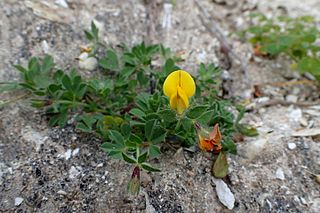
Lotus edulis is a species of annual herb in the family Fabaceae. They have a self-supporting growth form and compound, broad leaves. Individuals can grow to 0.14 m.

Melilotus italicus is a species of annual herb in the family Fabaceae. They have a self-supporting growth form and compound, broad leaves. Individuals can grow to 0.39 m.

Parietaria lusitanica is a species of plant in the family Urticaceae.
Persicaria senegalensis is a species of perennial herb in the family Polygonaceae. They have a self-supporting growth form and simple, broad leaves.

Plantago serraria is a species of plants in the family Plantaginaceae.

Ruscus hypophyllum is a species of shrub in the family Asparagaceae. They have a self-supporting growth form and simple, broad leaves. Individuals can grow to 0.42 m.
Scrophularia peregrina, the Mediterranean figwort, is a species of annual herb in the family Scrophulariaceae. They have a self-supporting growth form. Individuals can grow to 0.39 m.
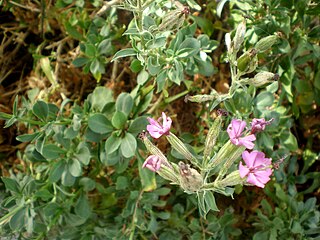
Silene fruticosa is a species of perennial herb in the family Caryophyllaceae (carpetweeds). They have a self-supporting growth form. Individuals can grow to 0.2 m.
Silene nocturna is a species of annual herb in the family Caryophyllaceae (carpetweeds). They have a self-supporting growth form and simple, broad leaves. Individuals can grow to 0.39 m.
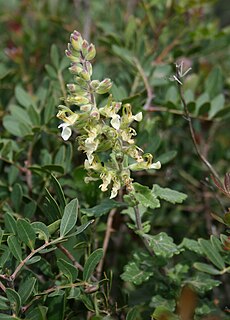
Teucrium flavum is a species of shrub in the family Lamiaceae. They have a self-supporting growth form and simple, broad leaves. Individuals can grow to 0.39 m.
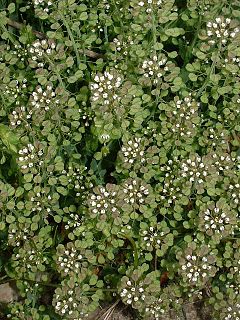
Thlaspi perfoliatum is a species of plants in the family Brassicaceae.
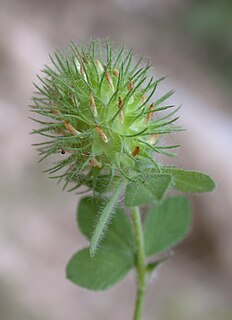
Trifolium lappaceum, the burdock clover, is a species of annual herb in the family Fabaceae. They have a self-supporting growth form and compound, broad leaves.

Trifolium scabrum, the rough clover, is a species of annual herb in the family Fabaceae. They have a self-supporting growth form and compound, broad leaves. Individuals can grow to 0.12 m.
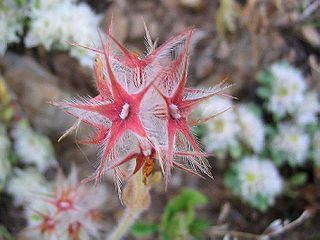
Trifolium stellatum, the star clover, is a species of annual herb in the family Fabaceae. They have a self-supporting growth form and compound, broad leaves. Flowers are visited by mason bees, Anthocopa, Osmia aurulenta, and Anthophora. Individuals can grow to 0.11 m.

Tripodion tetraphyllum is a species of annual herb in the family Fabaceae. They have a self-supporting growth form and compound, broad leaves. Individuals can grow to 0.2 m.
















